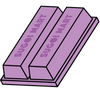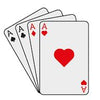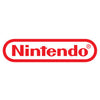Back To School: A guide to the Japanese school system
Out of all the countries in the world, Japan has an economy growing quickly and has one of the most educated populations. The success of Japan is most likely due to the role played by the country's education system, from strict entrance exams to extra curricular activities, extra lessons to specialized training colleges, and the strong ethics of the ministry of education. In many aspects, the Japanese educational system is unique from other systems. Everyone is interested in the Japanese educational system since Japan is a small nation with a perfect horizon. That has been demonstrated for years!
Unquestionably one of the world's most literate and developed countries is the country of the rising sun, Japan. Japanese education is symbolized by the digits 6-3-3-4. For a total of 16 years of education, that equates to 6 years of elementary school, 3 years of junior high school, 3 years of high school, and 4 years of university. However, a few elements of the Japanese educational system need to be understood. It's time to discover more if you're curious about what makes Japanese education superior to that of other nations. Here is a guide to the Japanese school system.
The Education in Japan
-
Pre-primary school
Japan's educational system is often started with a pre-school education, which is divided into two categories: kindergarten and childcare, in which students can start as young as 3 and 4 years old. In Japan, pre-primary education is not required, but many parents enroll their children to foster the growth of their cognitive, social, and emotional abilities. Take note that interactive play is more focused in pre-primary classes! Children are also prepared for elementary schools through this.
-
Elementary School
After attending pre-primary education, students begin elementary school at age 6, which is included in Japanese compulsory education. Students study various subjects and a variety of disciplines from grades 1 through 6, including science, math, and history. Additionally, students may begin taking English as a foreign language in grades 5 and 6. Students learn how to live with other kids their own age in elementary schools. They learn discipline through after-school activities like cleaning the classrooms with their friends. Moreover, in elementary schools, the children typically have a homeroom teacher in charge of all the learning. The teacher can spend more time getting to know each student individually while the students benefit from consistent learning. Lastly, school field trip and yearly sports days foster class unity while providing children an exciting and enjoyable experience.
-
Junior High School
After elementary school, the students will enter junior high school as part of the compulsory education for the following three years. The curriculum for grades 7 through 9 covers a wide range of topics, including math, science, social studies, art, physical education, and Japanese culture. At this level, learning foreign languages also begins. Not just only is the English language necessary, but French, German, Korean, Chinese, and other languages are also taught at several high schools. The junior high schools offer children a chance to learn about life through recreational activities like cultural festivals, field trips, club activities, and many other group activities. The students start extra curricular activities by joining several groups in junior high schools. For many students, club activities are important in determining their interests and career paths. It offers students a vast and spotless opportunity to hone and polish their talent.
-
High School
After junior high school, many students pick to attend high school, but few choose the other alternatives while interacting with the workforce. Three alternatives comprise higher secondary education: general schools, technology institutions, and colleges for specialized training. Although upper secondary school in Japan is not required, 96 percent of students still choose to attend. This level has entrance exam, which potential students must pass. The high school follows the junior high school's curriculum while adding new courses. The high school curriculum includes business, accounting, and other specialized courses. To prepare, students tend to attend juku or special preparation schools, commonly known as cram schools, outside of their usual lessons. With that, cramming education became common among students who aspire to enroll in reputable universities, such as vocational schools and international schools in Japan. Lastly, the high school curriculum also includes vocational training so students can comprehend the Japanese labor market before joining the community.
-
College
Four years programs, two-year institutions, or senmon gakk or professional training college are the three alternatives available to students in Japan when they start junior colleges. Since many Japanese employers require a college degree as a minimum, many students are forced to attend university for four years following high school. Senmon Gakk, or vocational schools, on the other hand, require students to finish their coursework within two to three years. Having specialized credentials also gives students a competitive advantage when looking for work.
Start of the Japanese school year
In Japan, the start of the school year coincides with the wind-borne beauty of the cherry blossom season. There are three separate periods within it, each separated by a holiday: the first term runs from the start of April to the middle of July, the second from September to the end of December, and the third from the start of January to the start of March. Overall, Japanese students enjoy ten weeks of vacation each year. Usually, Japanese attend courses Monday through Friday, and school hours are often from 8:30 am to 3:30 pm, plus twice a month on a Saturday, but it differs depending on the school or university. Moreover, many students also enroll in evening classes (gakushu juku) to boost their grades. Some of them also participate in clubs that are part of the school, and extracurricular activities are strongly urged that includes language arts, mathematics, science, music, and economics.
Summer break
Summer break is a time to have fun and enjoy the warm weather, spend time with friends and family, or travel on vacation. Summer breaks separate the three semesters at Japanese schools. The majority of schools have summer breaks from July 20 to August 31. Unlike in other countries, where every student typically have two to three months of vacation time, Japanese typically only get five weeks off from school.
School holidays
For Japan's public and private schools, holidays include public holidays, like New Year's, National Foundation Day, and Christmas. However, Japan also has distinctive holidays that aren't observed anywhere else globally. Keep track of the 2022 academic year school holiday with the help of this cute desk calendar. Each month features a distinct Japanese pattern!
Grade system
Many countries have a unique educational system designed to improve student's skills as they advance from lower levels to higher levels, and Japan is no exception. The high school grading scale uses a numerical grade from 5 to 1. Number 5 is the highest, or good, while number 1 is the lowest or fail. On the other hand, national universities tended to utilize a 4-scale grading system with the letters A, B, C, and F. The highest grade is an A, while those who perform below average are awarded an F but are allowed to retake the course later.
School supplies
Japanese children must work hard in school due to the nation's competitive educational system. To help kids study more effectively, shops like Sugoi Mart by Japan Crate have them covered with complete toolkits of amazing Japanese school supplies.
-
Sumikko Gurashi Stationery Set (Blue)

This stationery set includes 1 Tote Bag, 1 Ipad Stand, 1 Cushion, 1 Drawer Box, 1 Small White Board, 1 Small Table Tray, and 1 Wall Organiser. This set will definitely help you study comfortably and be enjoyable.
-
Pencil Case




A pencil case is an important piece of equipment for both elementary and high school students. Purchase a pencil case that will suit your individual requirements from Attack On Titan double zipper pen case, Demon Slayer pen case featuring Tanjiro and Nezuko, a double-sided yokai pen case with a sharpener, and a spacious sailor moon eternal pen case.
-
Eraser

An eraser is a crucial component of a child's pencil case. The child can swiftly correct any flaws and errors while completing an assignment with its assistance. And Sugoi Mart may have the best eraser you'll ever see, the Mount Fuji x Japanese Motifs Eraser. These adorable erasers were inspired by Mount Fuji, the most famous landmark in Japan. The eraser begins to resemble Fuji as you use it more frequently. A traditional Japanese pattern design is also included.
-
Notebook

-
Students often use notebooks to have a structure for the organization of their topics. With these awesome Demon Slayer Campus B5 notebooks, you may take notes in class or simply jot down your thoughts and ideas. Each of the five notebooks in the collection has 60 pages.
-
Bags


From as early as first grade, Japanese students frequently carry a lot of textbooks, bento boxes, umbrellas, and school materials. Thus, the bag they carry needs to be able to handle it. It's crucial that kids have a good bag that evenly distributes the weight of everything they need for school while also maintaining excellent posture. And Sumikko Gurashi x Title Role Children Backpack with unique design is no exception. You can also check the Hello Kitty Blue & White Mini Backpack if you are seeking a convenient bag.
-
Back to school lucky bag - COMING SOON

To start the new school year off right, Sugoi Mart got you! Last year, we offer lucky back-to-school bags and the newest accessories, perfect to start the school year with a bang! We are revamping it this year and will make sure to get you the info.












































































Leave a comment